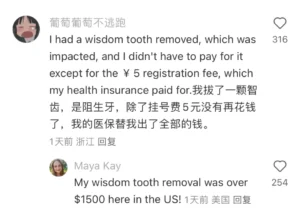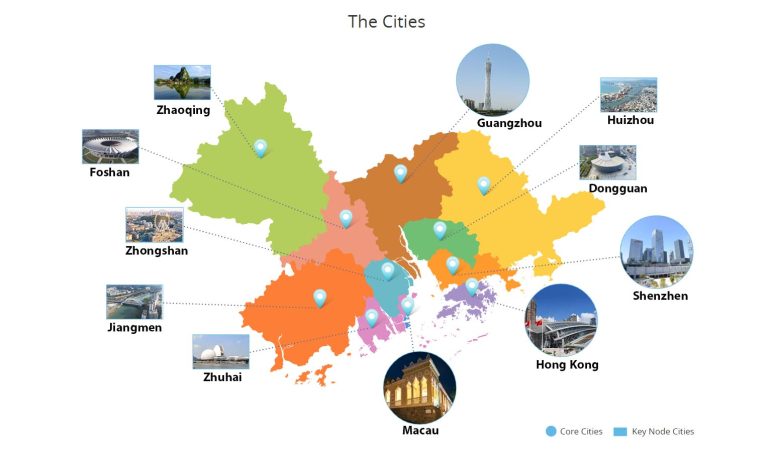Recently, Chinese and American netizens have been clashing on Xiaohongshu.

Under a post where a foreign user inquired about China’s healthcare system, over 13,000 comments poured in, sparking a heated debate between Chinese and American netizens.
The top comment that gained the most attention reads:
“Giving birth costs $70,000 USD (about 510,000 RMB)? That’s right, and it’s not even the most expensive thing in U.S. healthcare.”
Giving Birth: $70,000 or Paying Off an Ambulance Bill for 5 Years

In the U.S., natural childbirth (vaginal delivery) without insurance costs between $5,000 and $11,000 USD (about 36,000–80,000 RMB). This includes hospital bed fees, doctor fees, midwife charges, and medication costs.
For a C-section, the cost is even higher. It includes operating room fees, anesthesia, and additional post-surgical care. Without insurance, the total cost ranges from $7,500–$15,000 USD (about 55,000–110,000 RMB).
Of course, if you have private insurance, the out-of-pocket costs can be significantly lower. Vaginal delivery may cost a few hundred to a few thousand dollars, while a C-section typically ranges between $1,500–$5,000 USD for the patient.
A friend of the author, “Dr. B,” who graduated from a prestigious Chinese medical school and is now practicing in the U.S., shared his insights:
“In the U.S., the cost of childbirth varies greatly depending on your insurance. Some plans still leave you paying thousands of dollars after reimbursement, while others cover nearly all expenses, leaving you with little to no bill.”
What About the Cost of Giving Birth in China?
According to data released by China’s National Healthcare Security Administration last year, in 2021, the average medical expense for vaginal delivery in public hospitals was 3,547 RMB, while a C-section cost 9,119 RMB.
Most regions in China have standardized reimbursement rates for hospital deliveries under the maternity insurance system. In 2022, female employees covered under the system received an average reimbursement of 5,899 RMB for maternity-related medical expenses.
One Xiaohongshu user from Guangdong commented that her sister recently gave birth and spent less than 100 RMB.
For perspective, in 2023, the median disposable income per capita in China was 33,036 RMB, compared to the U.S., where the median disposable income per household was $27,586 USD (about 202,246 RMB).
It’s Not Just Childbirth—Healthcare Costs in the U.S. Are High Across the Board
Take wisdom tooth extraction as an example. In Zhejiang, China, the cost of removing an impacted tooth is fully covered by insurance except for a 5 RMB registration fee. In contrast, an American netizen shared that their wisdom tooth extraction cost $1,500 USD (more than 10,000 RMB).

And then there’s the infamous “sky-high ambulance fees,” which are no longer just an urban myth. One user recalled calling an ambulance five years ago, which cost $900 USD (about 6,600 RMB)—a debt they’re still paying off today.
Interestingly, in the U.S., it’s possible to owe money for medical treatment. Many hospitals and healthcare providers allow patients to pay in installments.
“The high cost of U.S. healthcare is partly driven by the structure and functioning of its insurance system,” Dr. B explained. “If you can’t afford to pay, or if you’re uninsured, hospitals will sometimes offer discounts—or even drastically reduce the bill. Anything is better than nothing.”
Insurance Costs in the U.S.
On average, employees in the U.S. pay $100–$500 USD per month for individual health insurance, while family insurance plans range from $500–$1,500 USD per month.
“The choice of insurance provider is determined by the employer, not the employee,” said Dr. B. “Employers cover part of the premium, and the employee pays the rest.”
Dr. B shared that his family insurance premium is $260 USD per month:
“The proportion you pay depends on your income level. Since I earn more, I have to cover a higher percentage of the premium.”
Is Being a Doctor in the U.S. as Lucrative as It Seems?
It’s not just the cost of healthcare that’s high in the U.S.—the system is also notoriously slow.
One netizen shared their experience of going to the emergency room for severe strep throat. After waiting five hours, they were hit with a bill of $2,000 USD.
Dr. B, who has worked in emergency rooms, explained that wait times depend on the severity of the patient’s condition. Emergency departments typically categorize patients into four levels:
- Level 1: Life-threatening conditions like car accidents, strokes, or heart attacks are given top priority.
- Level 2: Serious but not immediately life-threatening conditions, such as high fever or severe abdominal pain, usually wait 30 minutes to an hour.
- Level 3: Conditions that meet emergency criteria but are not critical. “Waiting two hours won’t kill you,” Dr. B said.
- Level 4: Non-urgent cases. “For example, someone showing up at 3 a.m. for chronic nasal congestion. By law, we can’t turn them away, but they’ll be the last to be seen.”
While emergency care can be slow, outpatient appointments are even slower. Dr. B himself booked an appointment with his family doctor in late December 2024—for late March 2025.
“Three-month waits are common for new patients. Existing patients are usually prioritized and can get appointments much faster,” Dr. B explained.
As a doctor, Dr. B feels that many inefficiencies waste physicians’ time:
“In China, people go straight to the point when they visit the doctor. But in the U.S., doctors spend a lot of time chatting with patients. Also, medical records in the U.S. require far more detailed documentation than in China.”
This reminds me of an account by a Chinese doctor who visited the Mayo Clinic. Their outpatient schedule ran from 8 a.m. to 4 p.m. Without a lunch break, they only managed to see seven patients in an entire day. For U.S. doctors, this is considered a ‘busy day.’
Reference Source:
https://mp.weixin.qq.com/s/Cs2eptXaNU4GS-ucmnq-zQ 











